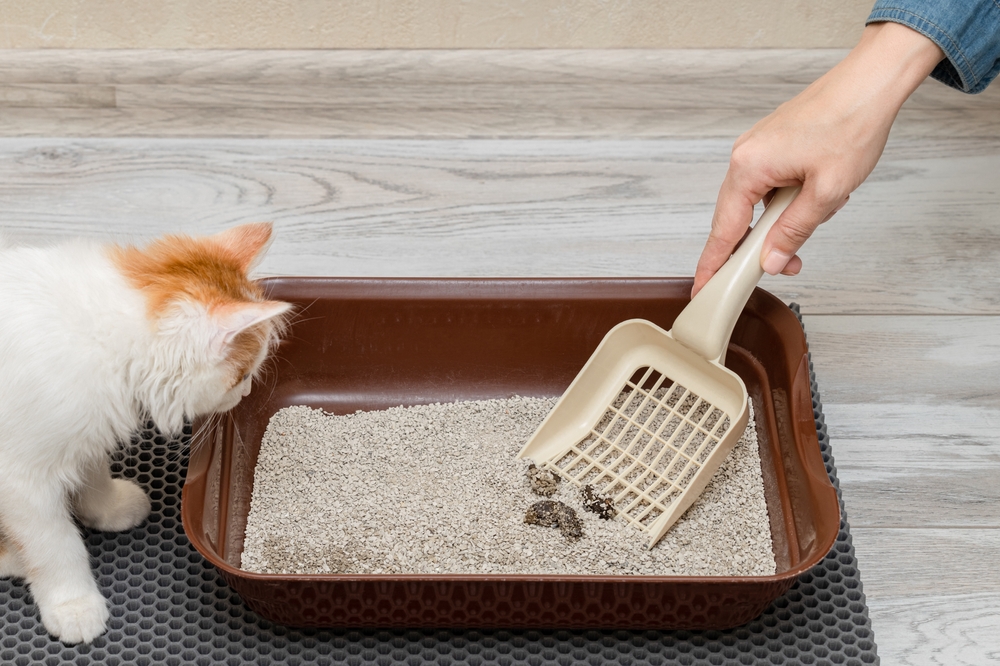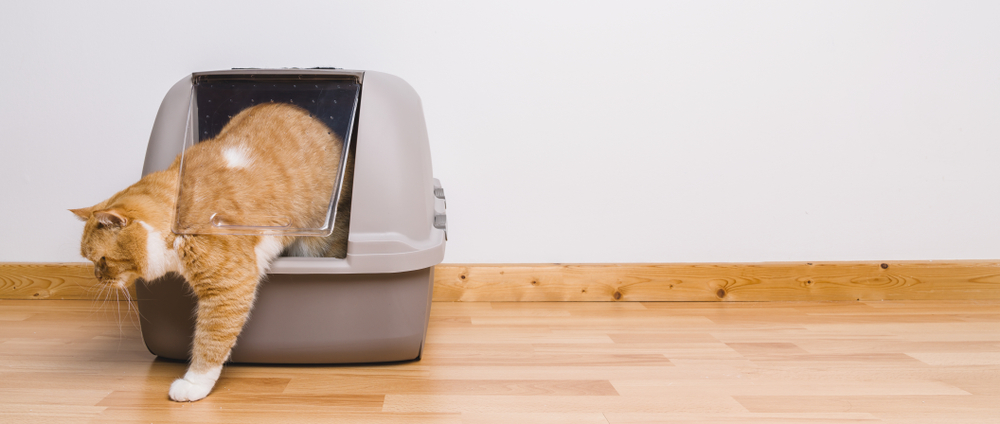Most cat owners would prefer to tuck away and forget about their cat’s litter box until the box needs cleaning, but that is not possible. While litter boxes may not top your list of dinner party topics, they play an essential role in your cat’s wellbeing, and you should understand what your cat wants. Litter boxes are definitely not created equal.
Many nuances can make or break your cat’s litter box experience and, if you fail to take them into consideration, your finicky feline will likely find a new place to “go.” Our North Waterloo Veterinary Hospital team wants to help cat owners avoid the messy consequences of feline litter box aversion, so we are sharing our tips for setting up your cat for litter box success.
All cat litter boxes are not created equal
Choosing an appropriate litter box is the first step toward creating your cat’s healthy bathroom habits. When selecting their litter box, consider your cat’s preferences and needs, including:
- Length — Cats need room to move around in the litter box. Ideally, the litter box should be one and a half times as long as your cat.
- Height — Ensure the litter box sides are low enough for your cat to climb in and out easily. Kittens and elderly cats will find getting in and out of a deep litter box too difficult.
- Coverings — Most cats prefer open boxes to covered ones, which are often too small for them to turn around. They also trap odors inside—which you may appreciate, but your cat will not.
Litter box placement matters to your cat
You can choose the perfect litter box for your cat, but if your cat does not like the location, they may not be inclined to use it. Cats are often on high alert in the litter box—in the wild, predators could take advantage of their vulnerability and attack—and box placement can impact how safe your pet feels. Litter box placement should meet the following feline criteria:
- Privacy — A private location, such as a spare bathroom, ensures your cat feels safe and private while using their litter box.
- Quiet — Your cat may negatively associate their litter box with unsettling loud noises or disturbances, such as a washing machine, and eventually develop an aversion to their litter box. Place your car’s litter box in a quiet location, so they can go about their business undisturbed and stress-free.
- Away from food and water — You wouldn’t want to use a toilet in the middle of your kitchen, and cats have a similar innate aversion to eliminating near their food and water sources. Keep your cat’s litter box away from their food and water bowls to respect this natural preference and maintain a hygienic environment.
- Easy access — Don’t tuck away the litter box in a place that your cat rarely frequents, or that is difficult for them to access. If your cat has to navigate obstacles, such as stairs, or the litter box is often blocked off or inconvenient, they may seek alternative, inappropriate spots to relieve themselves. The litter box should be somewhere they can quickly and easily access to ensure consistent use.
Cats can be picky about their litter
Cats have a sensitive sense of smell, so resist the urge to get a scented litter to mask litter box odors. Most cats prefer unscented, clumping litter, with fine particles rather than pellets or crystals, because they prefer the texture on their paws. Also, their litter should be about two inches deep to ensure they can dig and bury.
Multiple cats need multiple litter boxes
Cats are naturally territorial and do not like competing for a shared box. This can lead to behavioral problems, including total litter box avoidance and using alternatives. For a multicat household, the guideline is one box for every cat, plus one extra—for example, for three cats, you should provide four litter boxes. Separate multiple litter boxes in different areas, and place boxes on each home level.
Cats prefer a clean litter box

The best way to ensure your cat consistently uses their litter box is to keep the box clean and the area tidy. Some cats will turn up their nose at the slightest smell of urine or stool or a single clump of litter and will search for other options. Scoop the litter at least daily, and clean the box thoroughly with a mild cleaner and refresh the litter weekly. Prioritizing cleanliness promotes good hygiene and ensures your cat will use their litter box.
Setting up your cat for litter box success by following these recommendations will minimize the likelihood of non-use. However, inappropriate feline urination can be the result of stress and some underlying diseases, so contact our North Waterloo Veterinary Hospital team if your cat refuses to use their litter box.







Leave A Comment